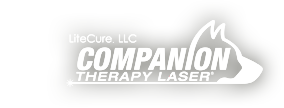Learn tips about Class IV laser therapy and other health related topics on the Companion Therapy Lasers blog! Check back weekly for updated posts.
If your practice is not engaged in social media, you are missing an opportunity to strengthen relationships with your existing clients – and the opportunity to attract new clients. Social media is a great way for veterinarians, technicians, and office staff to all play a role in building the business and strengthening client relationships.
Did you know YouTube is the second largest search engine? Did you know more people listen to music on YouTube than on iPods? Social media outlets are the principal means by which people learn, communicate, and engage in entertainment. According to Mashable, a leasing source on social media data, we now watch 4 billion hours of YouTube Videos per month…and cat videos are one of the top categories dominating the internet.
Social media is about building relationships with your clients – building relationships increases the likelihood that they will share your content and help build your network. Social media is free, so there’s no reason to not take advantage! Share pet safety tips around the holidays, or reminders about preventative treatments when it’s flea and tick season. Or, if you are trying to build awareness about your laser therapy program – share a photo of a pet being treated wearing it’s Doggles – these photos are hugely popular and the pet owner will share it with all of their friends.
The key is to understand how to use all of your social channels together to maximize your exposure. Twitter, Facebook, YouTube, and your business website can be a powerful combination when properly integrated and leveraged. Use the videos you post on YouTube to embed in your website – include Twitter, Facebook, and YouTube links on your website. Be sure to hash tag and mention when appropriate on your Twitter!
Class IV laser therapy is an extremely effective treatment for both large and small area skin wounds. Clinicians are also increasingly impressed by how well laser therapy assists burns to heal.
“Ember”, a Jack Russell mix, suffered from severe burns when her home burned down with her still indoors in her crate. Ember’s burns were severe and her prognosis was not good. She was treated with Class IV laser therapy, which accelerated her healing, reduced her need for pain medication, and even helped her to grow her fur back.
Class IV laser therapy reduces pain and inflammation and is a key component in reducing a pet’s pain during the road to recovery for severe burns. Treatment is well-tolerated by the patients, and skin re-growth is greatly accelerated by the addition of laser therapy treatments for of burn victims.
More recently in the news is the tragic story of “Hope”, a mixed-breed dog from Tampa, Florida. Hope was allegedly lit on fire and spent a significant amount of time recovering at BluePearl Veterinary Partners. Laser therapy was added to her treatment protocol and aided in her rehabilitation.
As laser therapy becomes a standard of care for pet pain across the world, claims about how to best reach target tissue with laser light are becoming more and more confusing. In addition to selecting a wavelength within the therapeutic window, here are the two keys to what you need to know about dosing at a therapeutic depth:
1. Power is directly related to delivering a therapeutic dosage at depth
2. Contact with the tissue matters
Higher powers enable greater depth of effective penetration to deep target tissues. If you are treating chronic arthritis or hip dysplasia– you need power to deliver an effective dose to those deeply located target tissues. Class IV therapy lasers have an effective power to treat both deep and superficial conditions.
Contact with the tissue gives you several advantages. First, compressing tissue allows you to get up to 1.5 cm closer to your target tissue – just through compression. Second, compressing the tissue pushes many superficial incidental absorbers out of the way, providing more energy at depth.
With on-contact Class IV therapy laser deep tissue treatment applicators, you can deliver up to 90% more photons to the target tissue because of the reduced scatter and closer proximity to target tissue.
Be sure you examine a “contact” handpiece closely – if there is space between the tissue and the delivery surface – you are not making contact with the tissue.



